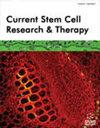间充质干细胞永生化方案的荟萃分析:再生医学指南
IF 2.1
4区 医学
Q4 CELL & TISSUE ENGINEERING
引用次数: 0
摘要
背景:本系统综述描述了人类和动物间充质干细胞(MSCs)永生化的最常见方法。本研究遵循PRISMA规则,在普洛斯彼罗国际系统评价机构审查委员会注册,编号协议代码:CRD42020202465。方法:以“间充质干细胞”和“永生化”为检索词进行数据检索系统化。出版物的检索期为2000年至2022年,使用的数据库为SCOPUS、PUBMED和SCIENCE DIRECT。搜索策略确定了384篇文章:SCOPUS数据库229篇,PUBMED 84篇,SCIENCE DIRECT 71篇。经过题目和摘要筛选,剩下285篇。本综述根据纳入和排除标准纳入了39篇文章。结果:在28篇文章中,从人和11只动物身上获得了永生化间充质干细胞。最常用的永生化方法是病毒转染。最常见的永生化细胞类型是骨髓间充质干细胞,最常用的永生化基因是hTERT(39.3%)和SV40T(54.5%)。结论:此外,我们还观察到,尽管只有不到一半的研究进行了致瘤性实验来验证永生化MSC,但大多数研究都对不同的MSC细胞传代进行了其他实验,如qRT-PCR、软琼脂中的集落形成、核型、FISH和细胞增殖。本文章由计算机程序翻译,如有差异,请以英文原文为准。
Meta-analysis of the Mesenchymal Stem Cells Immortalization Protocols: A Guideline for Regenerative Medicine
Background:: This systematic review describes the most common methodologies for immortalizing human and animal mesenchymal stem cells (MSCs). This study follows the rules of PRISMA and is registered in the Institutional Review Board of PROSPERO International of systematic reviews, numbered protocol code: CRD42020202465. Method:: The data search systematization was based on the words “mesenchymal stem cell” AND “immortalization.” The search period for publications was between 2000 and 2022, and the databases used were SCOPUS, PUBMED, and SCIENCE DIRECT. The search strategies identified 384 articles: 229 in the SCOPUS database, 84 in PUBMED, and 71 in SCIENCE DIRECT. After screening by titles and abstracts, 285 articles remained. This review included thirty-nine articles according to the inclusion and exclusion criteria. Result:: In 28 articles, MSCs were immortalized from humans and 11 animals. The most used immortalization methodology was viral transfection. The most common immortalized cell type was the MSC from bone marrow, and the most used gene for immortalizing human and animal MSCs was hTERT (39.3%) and SV40T (54.5%), respectively. Conclusion:: Also, it was observed that although less than half of the studies performed tumorigenicity assays to validate the immortalized MSCs, other assays, such as qRT-PCR, colony formation in soft agar, karyotype, FISH, and cell proliferation, were performed in most studies on distinct MSC cell passages.
求助全文
通过发布文献求助,成功后即可免费获取论文全文。
去求助
来源期刊

Current stem cell research & therapy
CELL & TISSUE ENGINEERING-CELL BIOLOGY
CiteScore
4.20
自引率
3.70%
发文量
197
审稿时长
>12 weeks
期刊介绍:
Current Stem Cell Research & Therapy publishes high quality frontier reviews, drug clinical trial studies and guest edited issues on all aspects of basic research on stem cells and their uses in clinical therapy. The journal is essential reading for all researchers and clinicians involved in stem cells research.
 求助内容:
求助内容: 应助结果提醒方式:
应助结果提醒方式:


